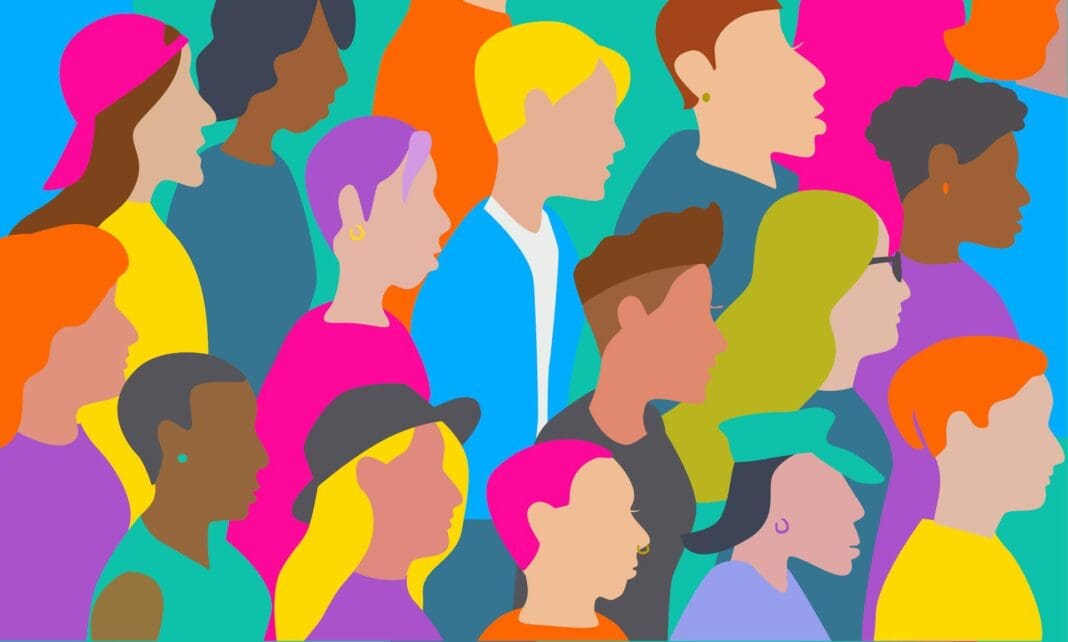The Trump administration claims to be rooting out “gender ideology extremism” and “restoring biological truth” in the United States.
In a January 2025 executive order, President Donald Trump decreed that there are only two genders – male and female – and that anyone who believes differently denies “the biological reality of sex.”
Yet as a gender studies scholar, I know what the science really says about gender and sex.
Most researchers in my field, as well as those in other disciplines such as sociology and biology, agree that biological sex is vastly more complicated than solely the two variants of male and female. Sexual diversity has been documented among all animals, including humans.
Trump’s claim otherwise is itself a gender “ideology” – that is, a set of beliefs and values about gender.
Experts in many disciplines have shown how gender is different from sex. Sex refers to bodily attributes such as genitals, hormones and chromosomes; gender is made up of the norms, roles, behaviors and expectations people are supposed to comply with based on the culture and society they live in.
As such, gender is socially constructed – that is, defined by a community’s beliefs and rituals. In other words, gender does not follow biology. Instead, people have what’s called a “gender identity” – an internal sense of themselves as masculine, feminine or somewhere in-between.
There are many ways in which gender and sex don’t necessarily line up.
Among humans, a conservative estimate by the United Nations suggests that up to 1.7% of the world’s population are intersex, meaning their bodies vary from what has been labeled typical combinations of chromosomes, hormones and genitals.
Intersex rights advocates have long pushed for medical treatment that reflects this fact, rather than common expectations of the human body. Recognition of gender and sex diversity can significantly reduce the stigma and trauma of being an intersex person.
In the animal kingdom, female spotted hyenas have a penis. Male seahorses get pregnant.
It took biologists a long time to figure out that some male animals do things that defy socially determined understandings of masculinity. But once they did, groundbreaking insights into the complexity of evolutionary processes have emerged.
By labeling the concept of gender identity as an “ideology,” the Trump administration has reduced all people – but especially transgender and nonbinary people – to a belief system, ignoring their complex human identities.
Trump’s executive order on gender is itself based on a gender ideology called “biological determinism” – the belief that there are only two genders and that the sex assigned at birth permanently determines one’s role in society.
This ideology dismisses research and data that document the complexity of human life. This can have serious social consequences.
Because adherents of biological determinism see sex and gender as one and the same, they generally want to ban puberty blockers, hormone therapy and other gender-affirming health care for trans youth. These are important and sometimes lifesaving treatments; the Trump administration and other adherents of their ideology dismiss them as medical malpractice.
The executive order also claims that enforcing a rigid male-female divide will keep women and girls safe because bathrooms and domestic violence shelters become dangerous for women when transgender people are allowed to use them.
Research has consistently debunked this notion. Privacy and safety problems have not increased due to the legal recognition of transgender individuals. There is no evidence that cisgender women – that is, those assigned female at birth – should fear violence committed against them by transgender women.
Much of my academic work has focused on how societies rooted in biological determinism tend to be patriarchal. They are designed by men for the benefit of men, and men hold most positions of authority.
Patriarchal countries, including the U.S., tend to value masculinity over femininity. Political and religious leaders, the media and social norms suggest women are weaker than men, more emotional and better suited for care work. As a result, they portray women as less effective leaders than men.
Historically, these societies have limited women’s sphere of influence to the household. That, in turn, prevented them from widespread access to, and success in, economic, religious and political leadership positions, just to name a few.
U.S. feminists in the 1960s and 1970s protested the idea that a person’s body should dictate what they can and cannot do with their life. Back then, patriarchal beliefs restricted women’s participation in sports – they weren’t allowed to run marathons – and jobs, with fields such as practicing law and surgery essentially off-limits.
Women in the U.S. also lacked full bodily autonomy for much of the 20th century. Access to contraception was limited, and terminating a pregnancy was illegal.
By the 1980s, women had succeeded in convincing much of U.S. society that they had the same abilities and should enjoy the same rights as men. By the early 2000s, they had made great strides toward attaining equality in education, career choice and reproductive freedom, among others.
Trans people began making similar progress in the 2010s.
As the Trump administration reverts to a simplistic interpretation of sex and gender, public debate on these basic social and political rights is reemerging.
There is legislation at the state and federal level banning transgender women athletes from participating in sports, bills that would make it a crime to identify as transgender and challenges to women serving in combat roles in the U.S. military.
Abortion, established as a constitutional right in 1973, had that constitutional protection reversed in 2022. Abortion is now outlawed in 12 states; others severely limit the ability to get the procedure.
To enforce Trump’s “gender ideology” executive order, the Department of Veterans Affairs is phasing out gender-affirming health care. The Centers for Disease Control and Prevention temporarily scrubbed data about women’s health that has been vital in raising public awareness and fueling ongoing research into aspects of women’s health, such as safe forms of contraception.
The administration’s policies and ideas are ingrained in a gender ideology that predates the feminist movement of the mid-20th century.
When asked in court during proceedings in lawsuits challenging the constitutionality of Trump’s executive order, lawyers representing the Trump administration have repeatedly failed to define what exactly the administration is referring to with the term “radical gender ideology.”
One lawyer, when prompted by a judge, replied that he was “loathe to speculate” what the president means by the phrase.
In my assessment, the administation’s inability to define “gender ideology” is a meaningful signal. The Trump administration is pursuing, in essence, its own gender ideology masked as anti-gender ideology.
This article is republished from The Conversation, a nonprofit, independent news organization bringing you facts and trustworthy analysis to help you make sense of our complex world. It was written by: Ina Seethaler, Coastal Carolina University
Read more: Data should smash the biological myth of promiscuous males and sexually coy females Backlash to transgender health care isn’t new − but the faulty science used to justify it has changed to meet the times How a gender conspiracy theory is spreading around the world
Ina Seethaler serves on the boards of the Palmetto State Abortion Fund and the Family Justice Center of Horry and Georgetown Counties. 














